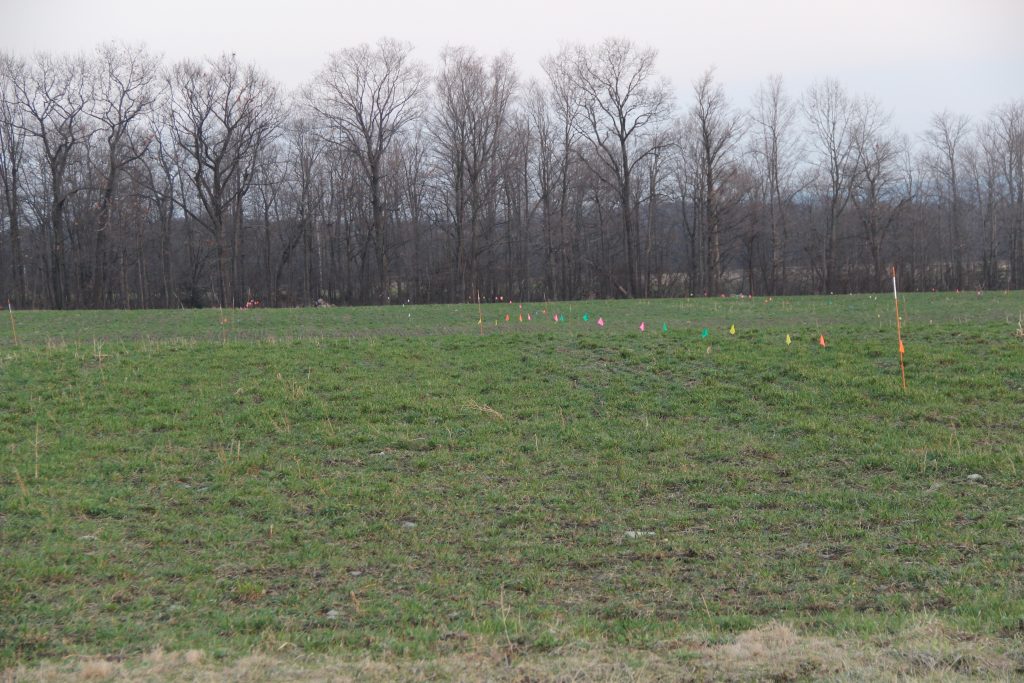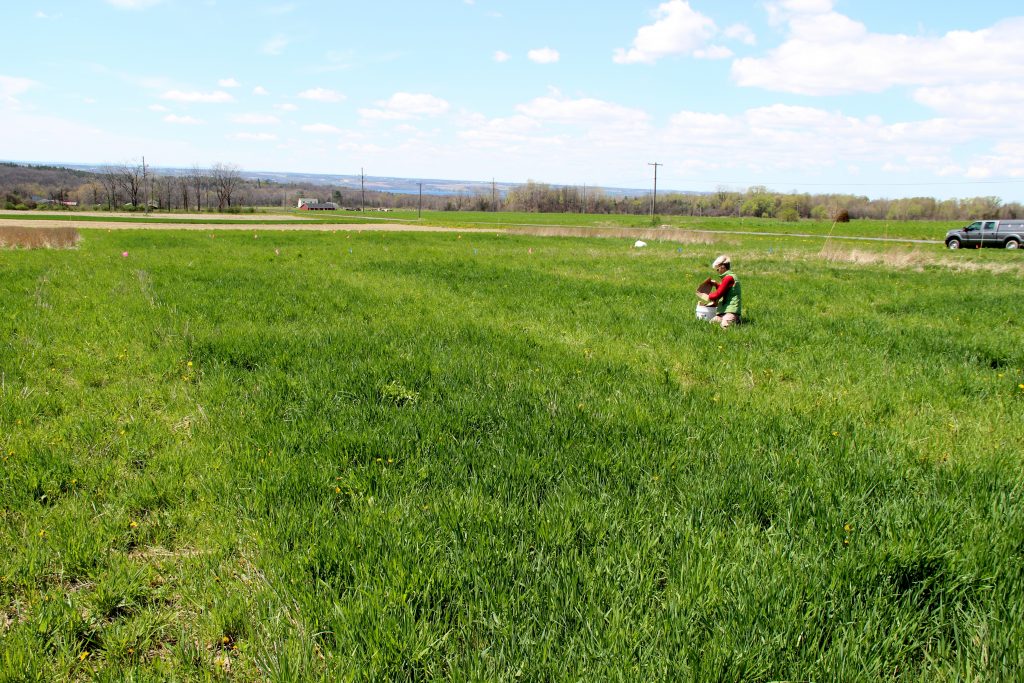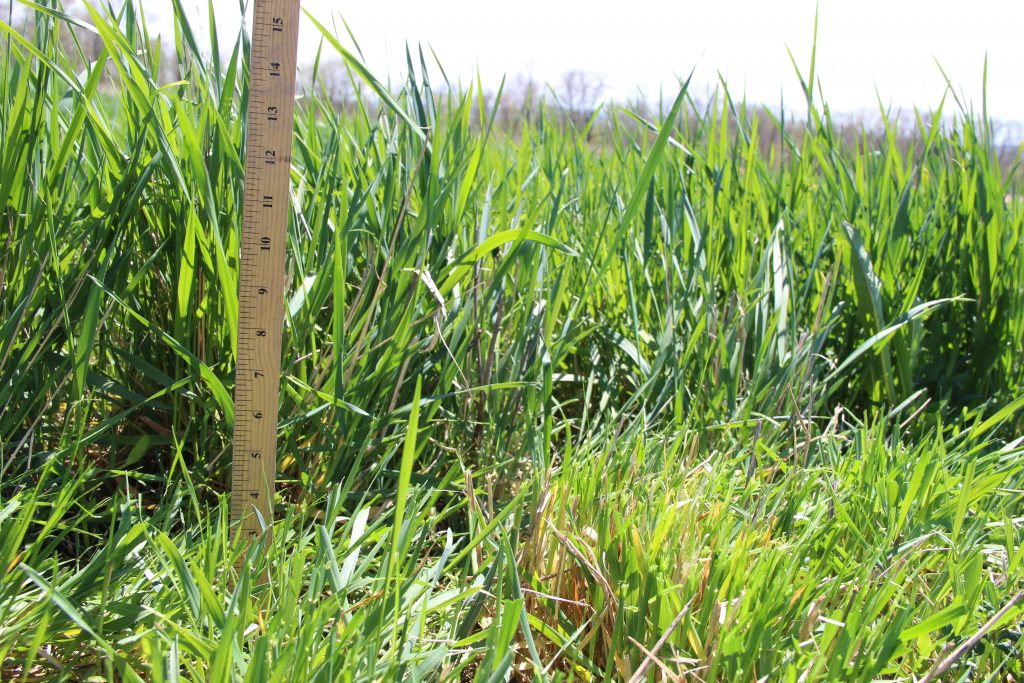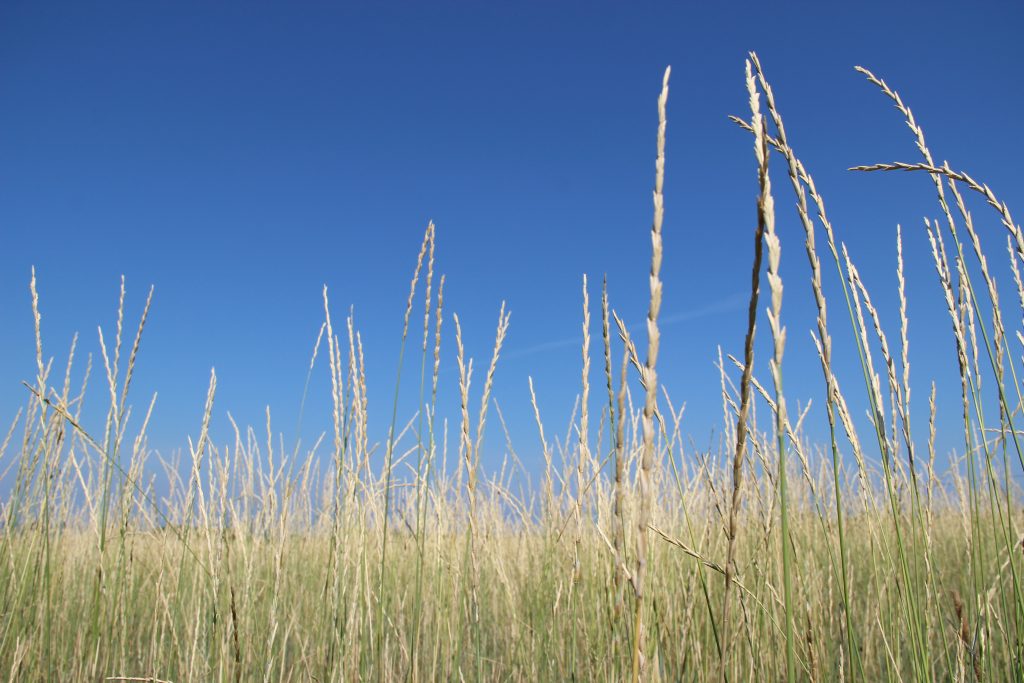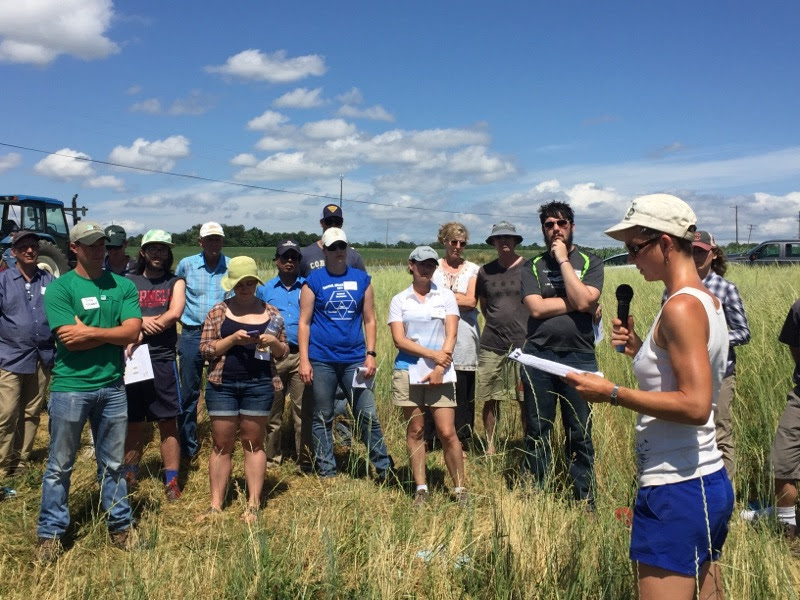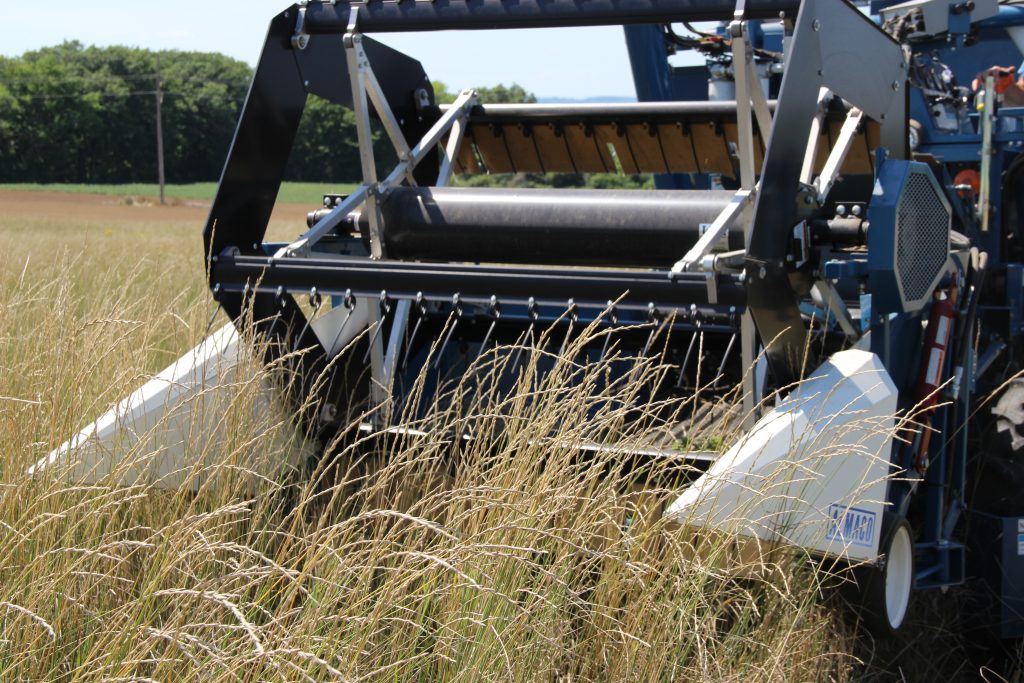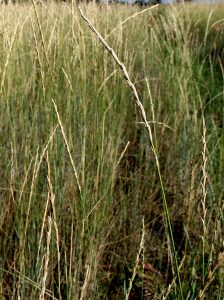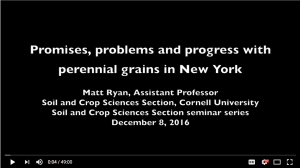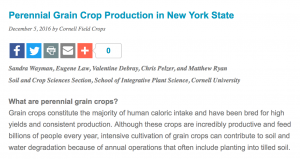What is a perennial grain?
Grain crops constitute the majority of our calorie intake, but currently all grains we use for food are annuals, meaning they must be replanted every year. The concept of perennial grains is that these grain plants could stay in the ground and produce year after year. Incorporating perennial grains into our food system could be an important step towards sustainability. Rather than replanting annual grains every year, the goal of growing perennial grains is to mimic natural systems. Breeding perennial grains has proved challenging for many years and finally The Land Institute has released their greatest success so far: intermediate wheatgrass (Thinopyrum Intermedium). The grain will be marketed under the trademarked name “KernzaTM”. Currently intermediate wheatgrass yields about 25% of annual wheat. In addition to intermediate wheatgrass, perennial rye (cultivar ‘ACE-1’) is another crop of interest, which is a cross between perennial wild rye (Secale montanum) and cereal rye (Secale cereal). Compared with annual grains where only about 50% of applied Nitrogen is retained, perennials retain 90% of applied Nitrogen.
Effects of forage harvesting on intermediate wheatgrass
Our group is partnering with the Land Institute and other researchers across the USA to plant plots of intermediate wheatgrass and collect data on the effects of forage harvest. To determine the major drivers of productivity in intermediate wheatgrass, we hope to explore how harvesting forage affects grain yields. We are manipulating timing and frequency of forage harvest and N application rate, and measuring total plot forage biomass removed, forage moisture, forage quality, and grain yield.
How does harvesting for forage influence perennial grains?
In one year we found that harvesting intermediate wheatgrass for forage in the spring lowered the summer grain yield by about 25%. However, in the second year, we did not see a grain yield reduction. Spring forage yields averaged 1,390 lb/ac (standard error ±340 lb/ac) across both years. The forage quality of intermediate wheatgrass in the spring is similar to prime forage quality standards. Although it appears that Kernza can produce high quality forage, which might offset the relatively low grain yields and increase profitability, more research is needed to determine how harvesting forage in the spring prior to stem elongation affects crop performance.
The yields of grain from intermediate wheatgrass ranged from about 500 to 750 lb/ac for cleaned and de-hulled grain. Although intermediate wheatgrass yields much lower than annual wheat, planting a perennial grain could result in benefits from forage production and soil health.
Perennial grain and legume polycultures
We are also conducting a separate study to explore companion-planting red clover with intermediate wheatgrass. We want to know if Nitrogen from a legume could supply sufficient fertility for an intermediate wheatgrass crop. We aim to test two hypotheses over three years: 1) Transitioning fields used for annual grain crop production to perennial grain crop production increases soil health, and 2) Intercropping legume forage crops with perennial grain crops reduces need for nitrogen inputs compared to perennial grain monocultures. In addition to evaluating soil health parameters, we will also be monitoring crop and weed biomass, disease incidence, yield, and grain quality to further inform future development of best management practices for perennial grain cropping systems. Additionally, we will be partnering with local farmers to test growing perennial grains on sloped and erodible land.
Survey: are farmer’s interested in perennial grains?
Given that perennial grains are a novel development and farmers have not grown these crops before, we conducted an online survey to assess farmers’ potential interest in perennial grains. A link to the survey was e-mailed to farmers in the US and France, and posted on pertinent farming websites. A total of 88 and 319 farmers, in the US and France respectively, responded to the survey between June 23 and July 25, 2016. Farmers were asked about: 1) their previous knowledge of perennial grains, 2) their interest in growing them, and 3) factors motivating their interest.
Fifty-eight percent of respondents said they were “interested” or “very interested” in growing perennial grains, and 39% said they “needed more information”. Seventy-three percent of farmers who had already heard about perennial grains before the survey said they were “interested” or “very interested”, whereas 47% of farmers who did not know about these crops said they were “interested” or “very interested”. The top three reasons selected by farmers for growing perennial grains were: “to increase or maintain farm profitability” (56%, n=188), “to reduce labor requirements” (44%, n=145), and “to improve soil health” (44%, n=145).”
